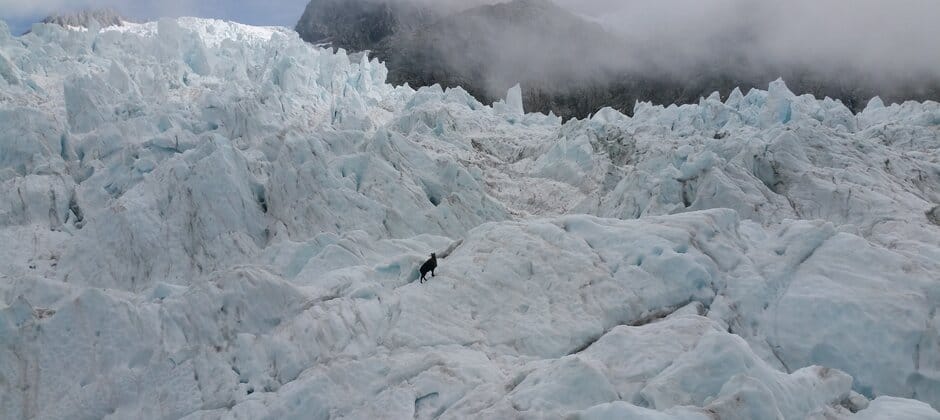Share this article
JWM: Himalayan tahr surveys inform management in New Zealand
Data from helicopter surveys of invasive Himalayan tahr that have spread through New Zealand’s Southern Alps are helping the country’s conservation agencies better manage the ungulates.
Himalayan tahr (Hemitragus jemlahicus) are a type of furry goat native to the mountains of its namesake, mostly in parts of northern India and Nepal. These ungulates have been introduced into several countries around the world such as Argentina and New Zealand to provide hunting opportunities. In New Zealand, which has no native mammals other than bats and marine mammals, tahr were introduced in the early 20th century. While hunters may have appreciated the opportunity the goats provided, tahr damage native plant species—especially to the tussock grasses in the high elevations where the tahr thrive.
“If populations get too high, they can cause damage to the natural environment, overgrazing the alpine tussock grasslands,” said David Ramsey, a wildlife manager at the Victoria Department of Environment, Land, Water and Planning, a state agency in Australia.
No predators—aside from human hunters—control tahr numbers in New Zealand. The government has a requirement to keep tahr numbers to 10,000 animals. But nobody had conducted robust effort using modern techniques to estimate the actual numbers of the species across their entire range.
In the summers and autumns from 2016 to 2019, wildlife managers flew helicopters over 117 plots in the Southern Alps that all measured two square kilometers. They flew over each of these plots recording every tahr they spotted. They returned to survey the same plots two more times over the next two months.
Ramsey has often worked in New Zealand over the years, so wildlife managers there contacted him to process and analyze the data to estimate how many tahr were actually roaming the Southern Alps.
Ramsey opted to build a model to estimate overall tahr numbers in a study published recently in the Journal of Wildlife Management. In doing so, he and his colleagues added components that accounted for the fact that the local population in the plots probably changed a little in the weeks between each survey as animals traveled in and out of the areas.
With these factors, the researchers estimated population numbers for the whole area, which includes seven tahr management units and two exclusion zones.
They found there were roughly 34,500 tahr on public conservation land in the Southern Alps, not including those ungulates that likely lived on privately managed land in the area. That’s more than triple what the management plan called for.
The surveys also revealed that tahr density is high in some areas, with up to 33 animals per square kilometer. While they were still found in other areas such as glaciers or snowfields, they were often less densely populated there.
“There was quite a wide range of densities of tahr in that landscape,” Ramsey said.
The government has already begun to act on the findings of these surveys, though some of these actions are controversial, with hunters on one hand who value tahr as a cultural and recreational resource, and conservationists, who are more concerned about their impact on native ecosystems. Agency staff have been culling some tahr by helicopter, especially in high-density and ecologically sensitive areas where they are likely to cause the most damage.
They’ve also tried to encourage increased harvest by recreational hunters. But hunting these species is difficult, since it often requires climbing a lot of rugged terrain just to access them.
Ramsey said that these surveys, since they are the first, can provide a baseline idea of the number of tahr in the area. Future surveys can use this as a point of comparison to determine if the population is changing over time, or whether management actions are having any impact.
This article features research that was published in a TWS peer-reviewed journal. Individual online access to all TWS journal articles is a benefit of membership. Join TWS now to read the latest in wildlife research.
Header Image: Himalayan tahr are well-suited to rugged mountain terrain. They were found crossing snowfields and even glaciers like this one in the Southern Alps. Credit: New Zealand Department of Conservation








